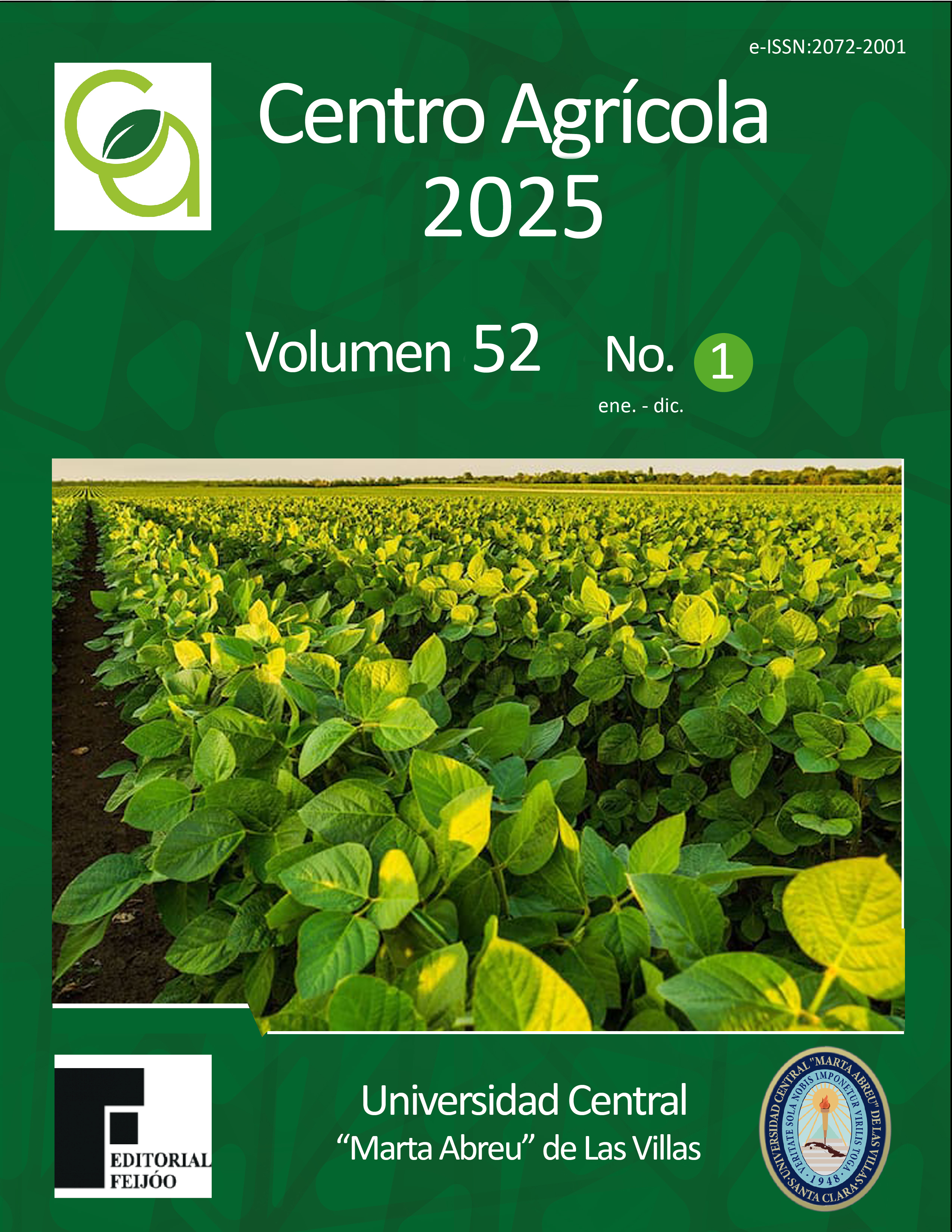CF: cag092222367
ARTÍCULO DE INVESTIGACIÓN
Uso de bioestimulantes en cultivos sometidos a condiciones de estrés hídrico
Use of biostimulants in crops subjected to water stress conditions
Erik Alexander García Pérez1*
Marcos Tulio García González1*
Liuder Isidoro Rodríguez Coca1
Dairy Esther García Pérez1
Idaileisy Lorenzo Marcial2
1 Universidad de Sancti Spíritus “José Martí”. Comandante Fajardo S/N, Sancti Spíritus 60100, Sancti Spíritus, Cuba
2 Centro Universitario Municipal de Cabaiguán “Silverio Blanco”, Sancti Spíritus, Cuba
RESUMEN
El presente trabajo se realizó con el objetivo de documentar los principales bioestimulantes utilizados en el mundo para mitigar los efectos del estrés hídrico, así como el efecto fisiológico, morfológico y bioquímico que estas sustancias provocan en los cultivos que han sido objetivos de estudio. Se realizó una revisión de artículos científicos publicados en revistas de alcance nacional e internacional, así como tesis de maestría y doctorados de diferentes universidades y centros científicos. La aplicación de bioestimulantes es una de las prácticas agrícolas más prometedoras para mitigar los efectos de la sequía en las plantas. En el mundo existen numerosos microorganismos, así como sustancias sintéticas o de origen natural que ejercen un efecto positivo en el desarrollo de los cultivos, sus rendimientos y tolerancia a la sequía. Pueden optimizar procesos bioquímicos, fisiológicos y anatómicos como regular la conductividad estomática, aumentar la concentración de prolinas y osmolitos celulares, aumentar la eficiencia fotosintética, inducir la producción de proteínas LEA y enzimas antioxidantes, reducir el daño a la membrana celular, mantener el contenido hídrico de las hojas y aumentar la capacidad de exploración del suelo del sistema radicular.
ABSTRACT
This work was carried out with the objective of documenting the main biostimulants used in the world to mitigate the effects of water stress, as well as the physiological, morphological, and biochemical effects that these substances cause in the crops that have been studied. A review of scientific articles published in national and international journals, as well as master's and doctoral theses from different universities and scientific centers was carried out. The application of biostimulants is one of the most promising agricultural practices to mitigate the effects of drought on plants. There are numerous microorganisms in the world, as well as synthetic or naturally occurring substances that have a positive effect on crop development, yields, and drought tolerance. They can optimize biochemical, physiological, and anatomical processes such as regulating stomatal conductance, increasing the concentration of proline and cellular osmolytes, increasing photosynthetic efficiency, inducing the production of LEA proteins and antioxidant enzymes, reducing cell membrane damage, maintaining leaf water content and increasing the soil exploration capacity of the root system.



